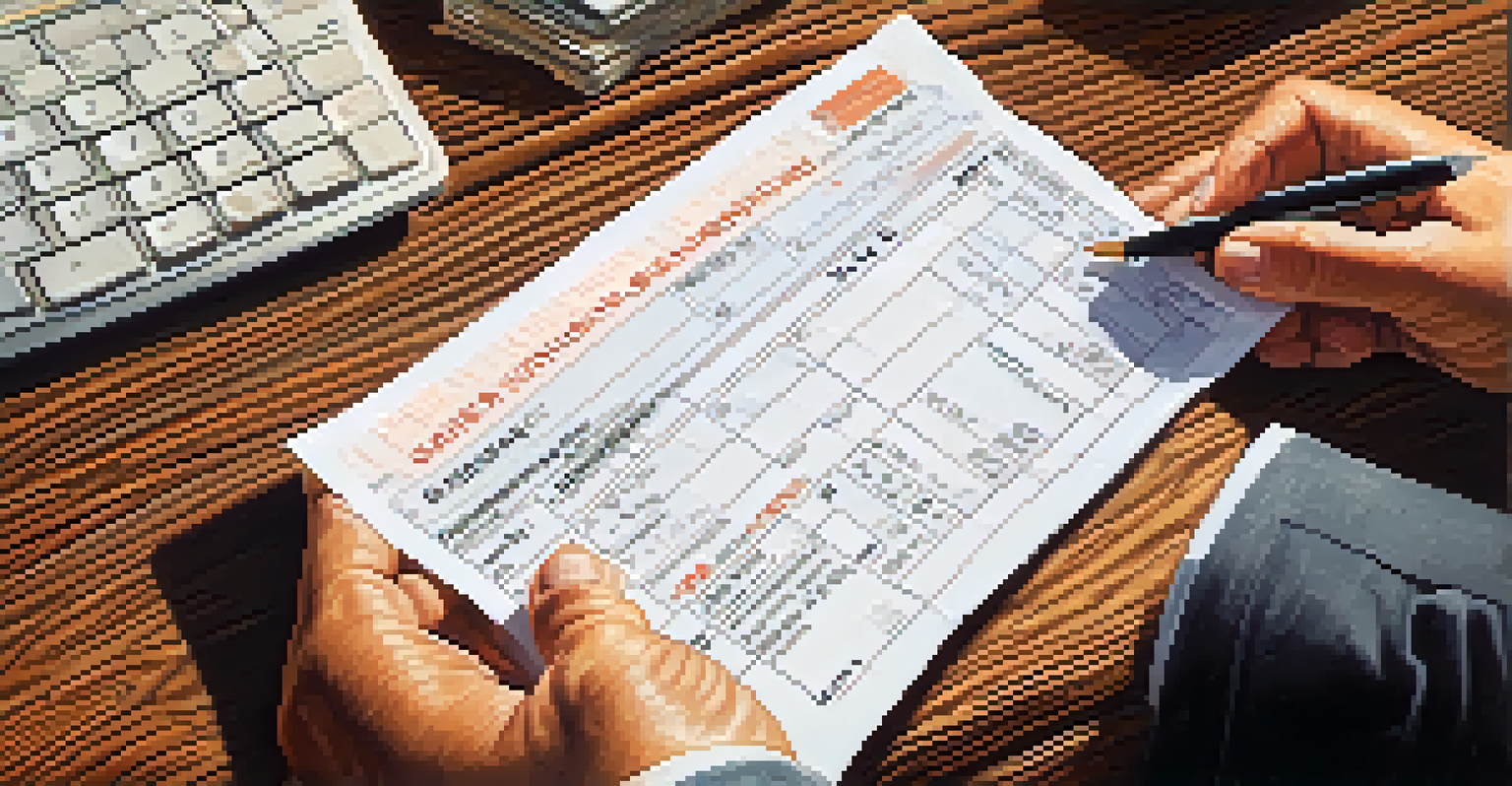Sales Tax Collection: How Businesses Can Get It Right

Understanding Sales Tax: What It Is and Why It Matters
Sales tax is a percentage added to the price of goods and services, collected by businesses on behalf of the government. It’s crucial for funding public services, so understanding it is fundamental for any business owner. When you sell products or services, you need to know how much tax to collect to stay compliant and avoid penalties.
It is not what you sell that matters as much as how you sell it.
For instance, if you run a bakery, you may need to charge sales tax on your cakes and pastries, depending on local regulations. Each state has its own rules about what is taxable, which can add to the complexity. This makes it essential to familiarize yourself with the specific laws in your area to ensure you’re collecting the right amount.
Failure to collect or remit sales tax can lead to hefty fines and back taxes, so it’s better to be informed than to face unexpected costs down the line. By understanding the fundamentals of sales tax, you’re taking the first step toward responsible business practices.
Identifying Taxable Goods and Services
Not everything you sell is taxable, and knowing what is considered taxable can save you and your customers money. Generally, tangible goods are taxable, but many services may also fall under this category, depending on your state. For example, in some states, landscaping services are taxable, while in others, they are not.

To navigate this, it’s helpful to consult your state’s revenue department or a tax professional. They can provide guidance on what items fall under taxable categories and any exemptions that may apply. This knowledge not only helps you collect the correct amount but also ensures clarity for your customers.
Understanding Sales Tax Basics
Sales tax is a percentage added to goods and services, essential for compliance and funding public services.
Additionally, keeping a detailed list of your products and their tax status can streamline the process, making it easier to update as laws change. By being diligent about what is taxable, you protect your business from potential audits and penalties.
Determining Your Sales Tax Rate
Sales tax rates can vary dramatically from one location to another, and understanding how to set your sales tax rate is critical. Many businesses mistakenly apply a flat rate, but this can lead to over- or under-collection. Instead, you should determine the appropriate rate based on where the sale occurs—this could be state, county, or city rates.
In this world, nothing is certain except death and taxes.
For instance, if you operate in California, your sales tax could include several layers depending on your city and county. Using online tools or consulting local resources can help you find the exact rate to apply. This attention to detail ensures that you’re compliant with all local regulations.
As tax rates can change, it’s important to regularly check for updates and adjust your rates as necessary. Keeping your sales tax rates accurate not only helps with compliance but also builds trust with your customers.
Collecting Sales Tax: Best Practices for Businesses
Once you’ve established the applicable sales tax rate, the next step is effective collection. Implementing a reliable point-of-sale (POS) system that automatically calculates and adds sales tax to transactions can save you a lot of headaches. This ensures that you collect the right amount every time without manual calculations.
Additionally, train your staff on how to handle sales tax questions from customers. Clear communication about tax rates and why they apply can foster a positive relationship with your clientele. If a customer understands the value of what they’re paying for, they’re less likely to resist the sales tax.
Identifying Taxable Items
Not all goods and services are taxable, so knowing what qualifies can save money and ensure compliance.
Remember, transparency is key. Providing receipts that clearly outline the sales tax can help customers feel more comfortable with the total amount they are paying, ultimately enhancing their shopping experience.
Filing Sales Tax Returns: A Step-by-Step Guide
Filing sales tax returns can seem daunting, but breaking it down into manageable steps can simplify the process. Start by gathering your sales records for the reporting period, including all collected sales tax. Most states require businesses to file either monthly, quarterly, or annually, so knowing your schedule is key.
Once you have your data, you’ll typically fill out a sales tax return form provided by your state’s revenue department. This form will require details about your total sales, taxable sales, and taxes collected. If you’re ever unsure about a specific requirement, don’t hesitate to reach out to your local tax authority or a tax professional for assistance.
Finally, ensure you file your return on time to avoid penalties. Setting reminders in advance can help keep you on track and ensure that your business stays compliant with sales tax regulations.
Staying Compliant: Tips for Avoiding Common Mistakes
Sales tax compliance is crucial for every business, but it is common to make mistakes along the way. One frequent error is failing to keep accurate records of sales and tax collected. Keeping detailed records can help you track your sales tax obligations and prepare for audits if necessary.
Another common mistake is not staying updated on tax law changes. Sales tax regulations can shift, and it’s important to stay informed about any updates that could affect your business. Subscribing to newsletters or joining local business groups can keep you in the loop.
Leveraging Technology for Tax
Using software solutions can streamline sales tax management, reducing manual work and minimizing errors.
Lastly, consider scheduling regular reviews of your sales tax processes. This could include checking your POS system, reviewing training with staff, or consulting with a tax professional. By proactively addressing potential issues, you can maintain compliance and avoid costly mistakes.
Leveraging Technology for Efficient Tax Management
In today’s digital age, technology can be a game-changer when it comes to managing sales tax. Many software solutions can automatically track, calculate, and file your sales tax returns, significantly reducing the manual workload. This not only saves time but also minimizes the risk of human error in your calculations.
For example, platforms like QuickBooks or Square offer integrated sales tax features that can adapt to changing rates based on location. By leveraging such technology, you free up valuable time that you can devote to growing your business instead of getting bogged down by tax details.

Moreover, some tools provide insights and analytics about your sales tax obligations, which can help you make informed decisions and prepare for future changes. Embracing technology not only helps streamline your sales tax processes but also enhances your overall operational efficiency.